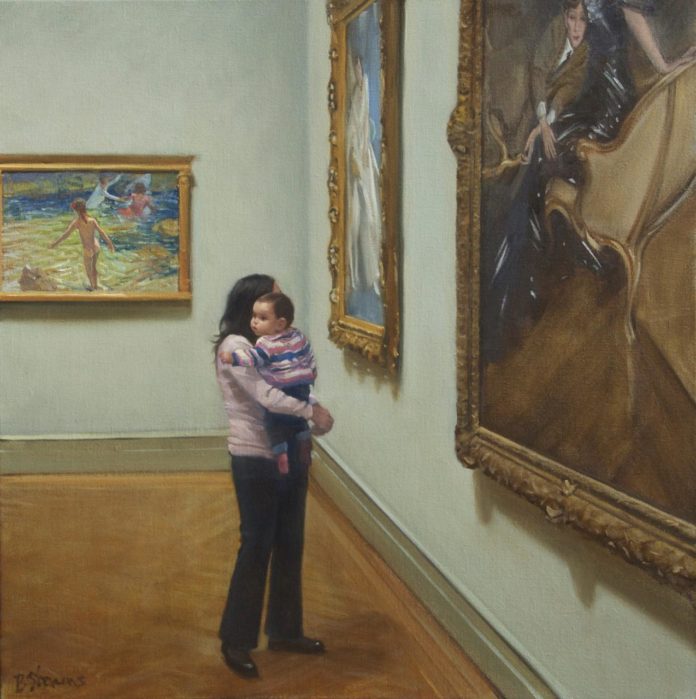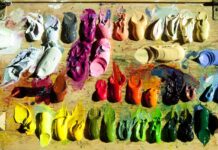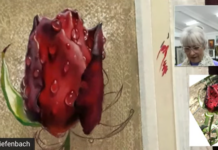For five years, three days a week, Bradley Stevens participated in a “daunting” program for artists that allowed him to study and copy works by the Old Masters in prominent museums. Learn about his “Museum Studies” series here.
How Bradley Stevens’ ‘Museum Studies’ Teach the Language of Art
BY SHAYDA WINDLE
There is something to be said about being a classically trained artist who is given an opportunity to study in such a diverse area as Washington, DC, where programs and opportunities exist for everyone. Our nation’s capital is also one of the few regions in this country where artists have immediate access to some of the most sophisticated museums and original works of art from the Old Masters.
Shortly before its opening in 1941, the trustees of the National Gallery of Art (NGA) in DC established a “copyist program” for artists and students to study the techniques of the Old Masters. The program sounds simple enough – artists are provided with a few essential tools: an easel, a stool, a drop cloth, and a locker to store their supplies. After acceptance into the program, students coordinate a set schedule with the museum so they may spend time focused on studying some of the most sought-after paintings in art history.
Bradley Stevens went through the copyist program after learning about it while obtaining his MFA from George Washington University in the late 70’s. He says the program was “daunting, at first,” but says he later “became obsessed with this new copying experience and ended up working in the museum three days a week for five years straight.”
He continues, “I made a point of copying as many different styles, time periods, nationalities, and artists as I could. Each painting teaches you something new. Not a day goes by when I don’t recall some lesson learned from the masters while I’m working in the studio on my own paintings.”
Bradley attributes much of his success as a contemporary realist painter to programs like the one at the NGA where he’s copied hundreds of Old Master paintings. From his time at the NGA, a series of original paintings emerged by Bradley called “Museum Studies,” which he humbly refers to as his “homage to the great paintings and artists that have inspired and influenced me.”
“Museum Studies” offers a unique, personal perspective of viewers enjoying artwork at both the National Gallery of Art and Metropolitan Museum of Art. Bradley continues, “I like the idea of people looking at art. It’s always so heartening to me that people seem to really enjoy art and visiting museums. Viewers of paintings, I believe, relate to the figures contained within them. They imagine themselves in such a setting. I find people fascinating and enjoy capturing their nuanced gestures as they look at artwork.”
In fact, it’s from these studies that an entirely new business was born in which Bradley has been commissioned to paint some of our nation’s most famous political leaders such as George Washington, Thomas Jefferson, and James Madison for notable institutions like Mount Vernon, the U.S. Capitol, the Smithsonian National Portrait Gallery, and the State Department, just to name a few.
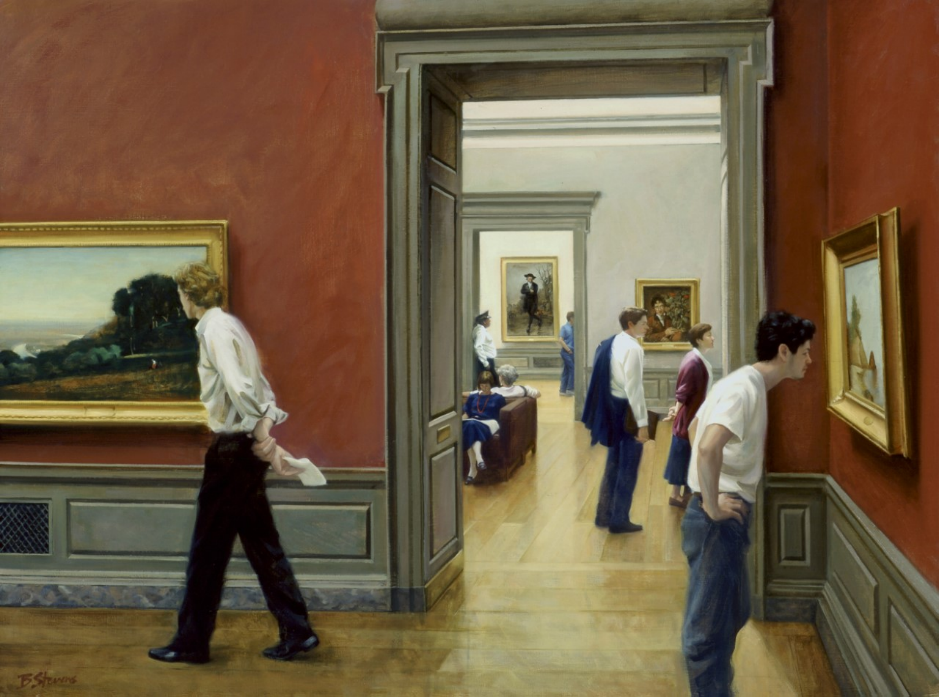
This piece above, “The American School,” is one of Bradley’s first from his “Museum Studies.” As he says, “it’s a kind of journey through American art history starting with Gilbert Stuart’s “The Skater” in the 18th century when American art was still very much influenced by European traditions [in this case British portraiture]. The middle room of the museum includes Rembrandt Peale’s painting of his brother Rubens with Geraniums from the early 19th century. The foreground features a couple American landscapes from later in the 19th century by George Inness and John Kensett.”
Bradley adds, “All of these artists have influenced me in one way or another. On the left is a self-portrait of my younger self; and on the right a former student, Robert Liberace who is now an extraordinarily successful artist. In the background, I took the liberty to include various other friends. Rob’s blue jeans and T-shirt plus his goose-neck gesture looking closely at the brushstrokes are supposed to symbolize an art student.”
Bradley tells us he sometimes “takes the liberty to move paintings around [in the museums] in order to have the particular ones I want to portray. Oftentimes, I’ll place family and friends in the galleries, so the paintings become more personal and autobiographical. I’ve even been known to put myself in a painting or two.”
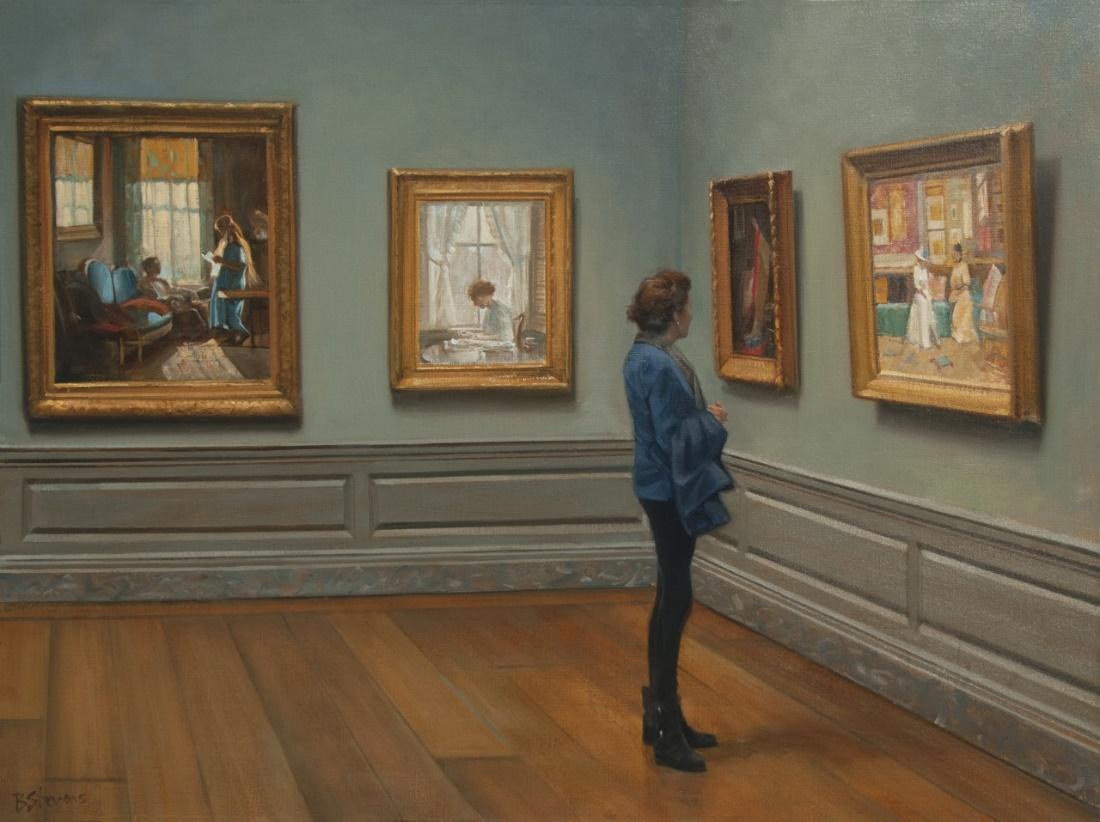
“Communion” is one such piece where Bradley adds his own personal touch to the onlooker. In this piece, the artist includes his wife Patricia in the painting. Bradley says, “Here, Patricia is looking at the William Merritt Chase painting ‘A Friendly Call,’ one of her favorites. She likes to imagine herself as one of the women depicted in the painting enjoying good conversation with a friend over a cup of tea.”
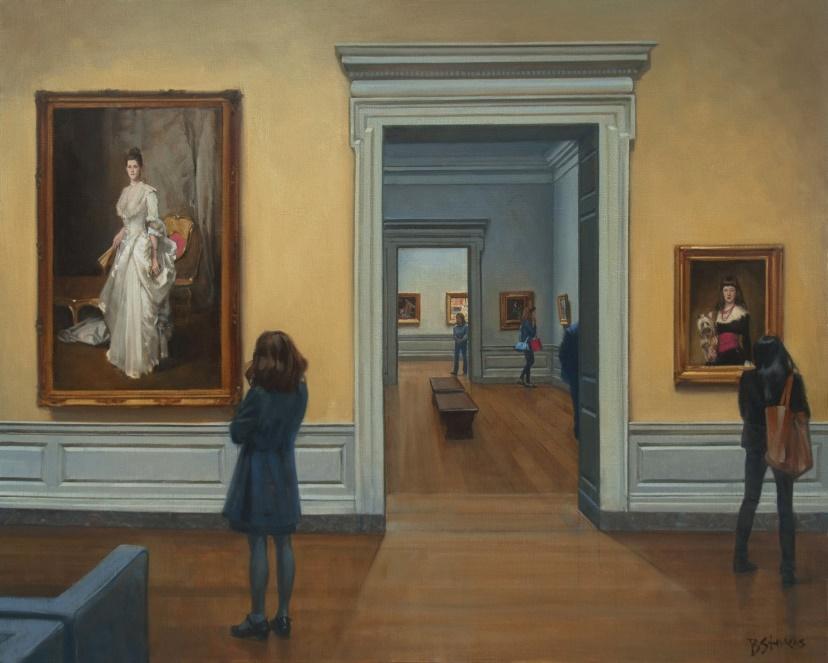
The painting “Inspiration” is another piece Stevens worked on in the National Gallery of Art as two museum-goers view John Singer Sargent portraits. He says, “This painting was inspired by my ongoing interest of mathematical geometry with the architecture of the museum. In fact, the topic of my Master’s Thesis [MFA degree] was on geometry in compositional design.”
Today, most of Bradley’s paintings from his “Museum Studies” series have sold to private collectors and are scattered about the country. But you can view some of the remaining pieces from this series currently on display at Broadway Gallery, in Alexandria, Virginia, including “Los Niños,” Stevens’ tribute to children both in art and life.
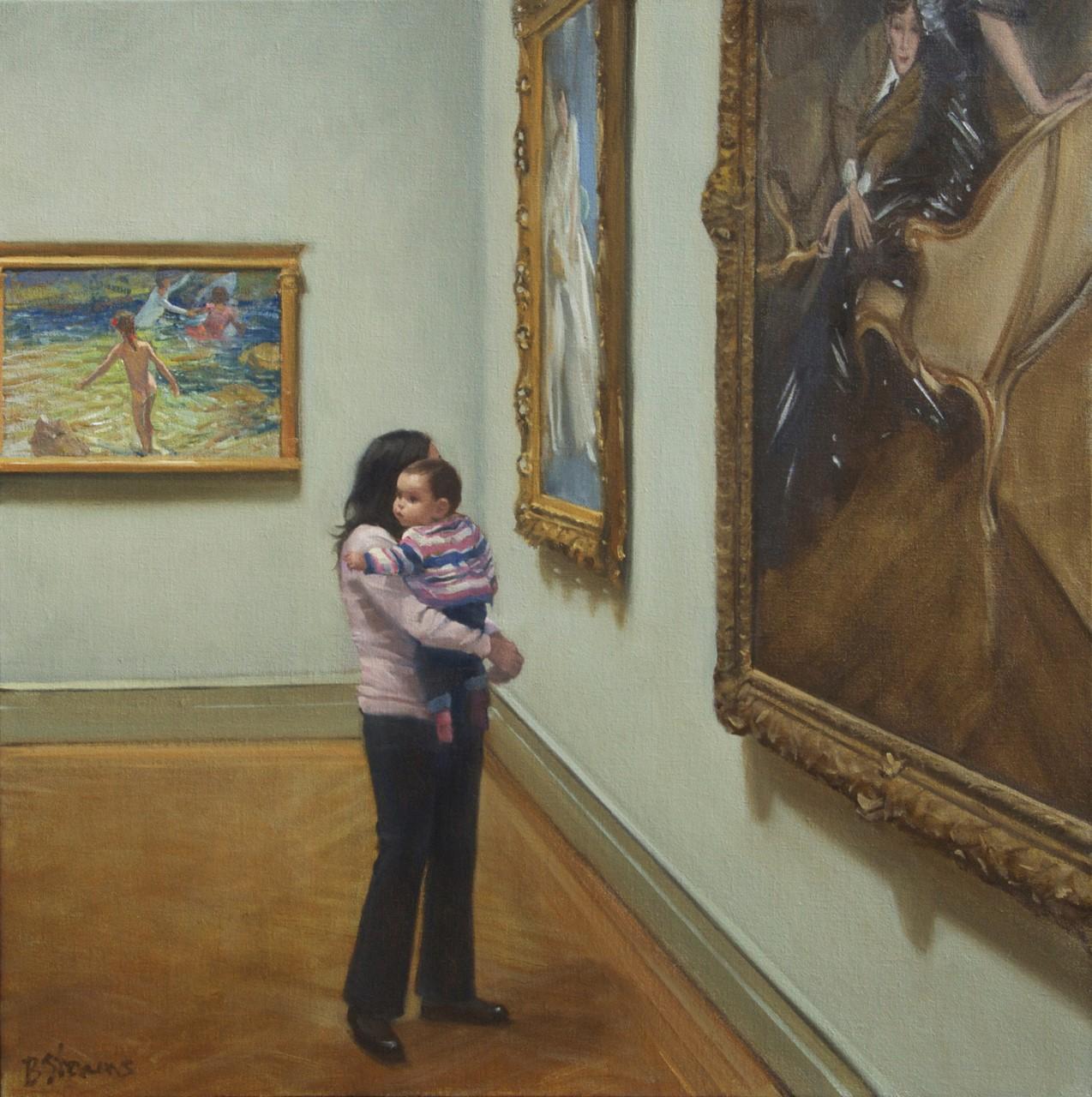
Bradley was inspired to paint “Los Niños” after a trip to the Metropolitan Museum of Art, when he spotted a mother carrying her young son. Here, she’s holding her child while studying Consuelo Vanderbilt’s son, Ivor Spencer-Churchill, in Boldini’s dashing double portrait. In the distance, Spanish artist, Joaquin Sorolla, depicts children frolicking in the Mediterranean surf, near Valencia.
When asked about his overall thoughts on the copyist program and its influence on his career, Bradley leaves us with this: “For centuries artists have always learned the craft of painting by copying the masters of previous eras. This is nothing new. It was an accepted part of one’s art education. Its only recently in the contemporary art world that copying has fallen out of favor, but I believe that it’s in the museums where I really learned how to paint. To paint well is hard. Why wouldn’t you want to learn the ‘language’ of art from the masters?”
Connect with the artist at bradleystevens.com.
Related Article > Masters of Shadow and Makers of Light
Visit EricRhoads.com (Publisher of Realism Today) to learn about opportunities for artists and art collectors, including Art Retreats – International Art Trips – Art Conventions – Art Workshops (in person and online, including Realism Live) – And More!


